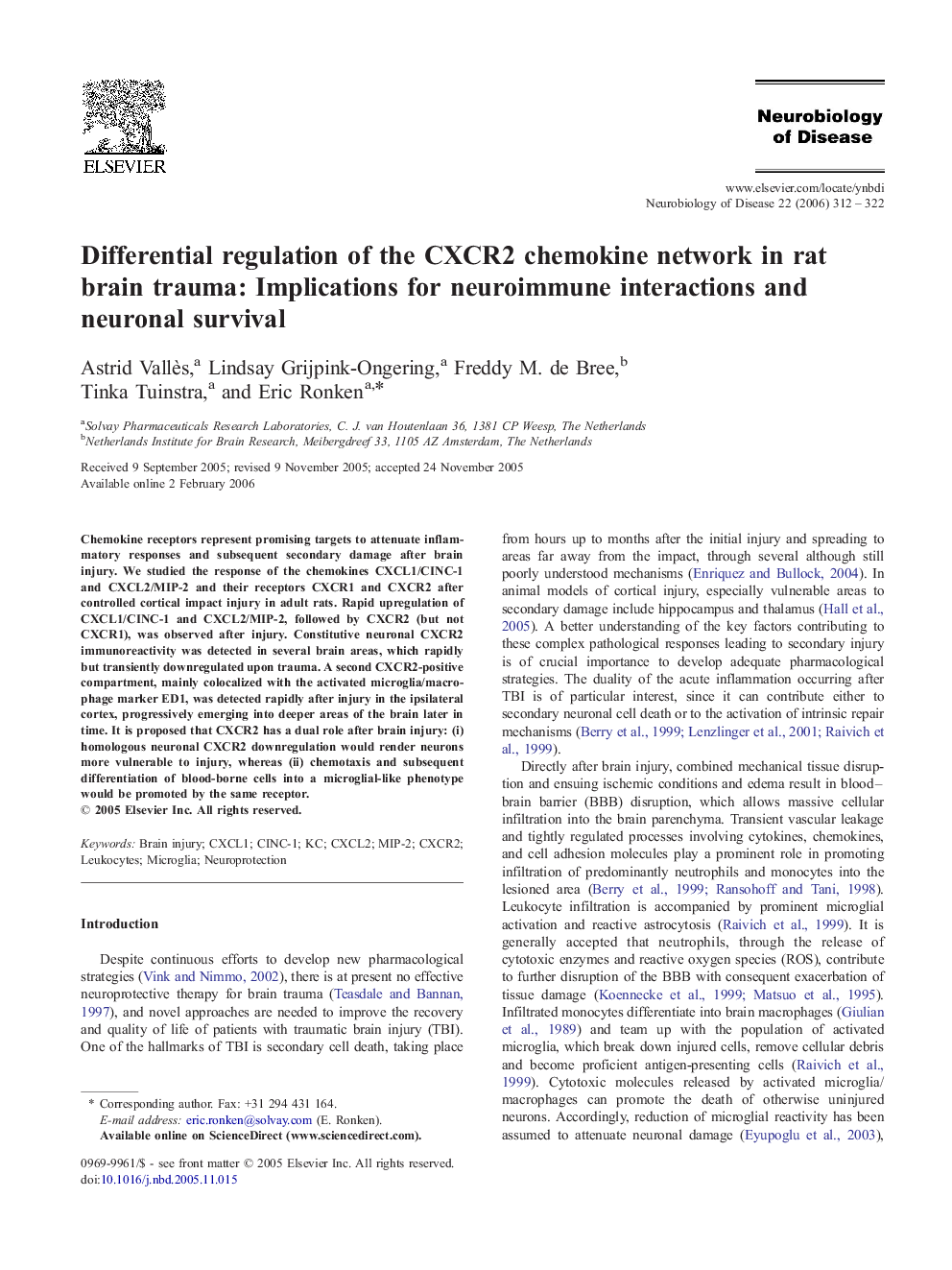| Article ID | Journal | Published Year | Pages | File Type |
|---|---|---|---|---|
| 3070935 | Neurobiology of Disease | 2006 | 11 Pages |
Chemokine receptors represent promising targets to attenuate inflammatory responses and subsequent secondary damage after brain injury. We studied the response of the chemokines CXCL1/CINC-1 and CXCL2/MIP-2 and their receptors CXCR1 and CXCR2 after controlled cortical impact injury in adult rats. Rapid upregulation of CXCL1/CINC-1 and CXCL2/MIP-2, followed by CXCR2 (but not CXCR1), was observed after injury. Constitutive neuronal CXCR2 immunoreactivity was detected in several brain areas, which rapidly but transiently downregulated upon trauma. A second CXCR2-positive compartment, mainly colocalized with the activated microglia/macrophage marker ED1, was detected rapidly after injury in the ipsilateral cortex, progressively emerging into deeper areas of the brain later in time. It is proposed that CXCR2 has a dual role after brain injury: (i) homologous neuronal CXCR2 downregulation would render neurons more vulnerable to injury, whereas (ii) chemotaxis and subsequent differentiation of blood-borne cells into a microglial-like phenotype would be promoted by the same receptor.
